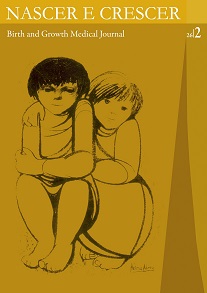KÉRION CELSI: A RARE COMPLICATION OF TINEA CAPITIS
DOI:
https://doi.org/10.25753/BirthGrowthMJ.v26.i2.9359Keywords:
Alopecia, Kerion celsi, Tinea capitisAbstract
Tinea capitis affects mostly children at school age. The transmission is possible through contact with infected animals, soil, from person to person and from contaminated objects. The clinical presentation ranges from a non-inflammatory lesion to an inflammatory disease with erythematous scaly lesions with alopecia, that may progress to Kerion celsi. Kerion is characterized by an inflammatory well-delimited and painful plaque, with pustules and suppurative abscesses. The resulting scars can cause alopecia. We report the clinical case of a tenyear- old child, residing in a rural area, who developed a scalp lesion after skull trauma, diagnosed as Kerion celsi. The authors want to draw attention to a rare complication of a common condition that may lead to permanent alopecia.
Downloads
References
Hernández T, Machado S, Carvalho S, Selores M. Tinhas
do Couro Cabeludo na Idade Pediátrica. Nascer e Crescer
;13: 23-6.
Nasarre I, Lozano M, Salanova L, Iturriagagoitia A, Vigas I.
Tratamiento de las tiñas del cuero cabelludo con terbinafina
oral en la infância. An Esp Pediatr 1997;46:487-9.
Calzada T, Esguevillas M, Santaliestra C, López A. Tinea
capitis en lactantes. Piel 2003;18:21-9.
Albarrán F, Desgarennes M, Guzmán E. Tiña inflamatória
de la cabeza (Quérion de Celso) por Microsporum canis.
Comunicación de un caso. Rev Cent Dermatol Pascua.
;15: 35-9.
Melo-Monteiro C, Paiva M, Martins C, Fagundes R, Monteiro
C. Kerion Celsi por Mycrosporum gyypseum. An bras
Dermatol. 2003; 78:319-21.
Isa-Isa R, Arenas R, Isa M. Inflammatory tinea capitis:
kerion, dermatophytic granuloma, and mycetoma. Clinics in
Dermatology. 2010;28: 133–6.
Hoarau G, Miquel J, Picot S. Kerion Celsi by Microsporum
gypseum. The Journal of Pediatrics. 2016: 24.
Proudfoot L, Morris-Jones R. Images in clinical medicine -
Kerion Celsi. N Engl J Med. 2012;366:1142. doi: 10.1056/
NEJMicm1104889.
Anahory B, Santos P, Borges M. Querion do couro cabeludo
– A propósito de um caso clínico. Rev Port Geral Fam.
;29:394-7.
Downloads
Additional Files
Published
How to Cite
Issue
Section
License
Copyright and Authors' Rights
All articles published in Nascer e Crescer - Birth and Growth Medical Journal are Open Access and comply with the requirements of funding agencies or academic institutions. For use by third parties, Nascer e Crescer - Birth and Growth Medical Journal adheres to the terms of the Creative Commons License "Attribution - Non-Commercial Use (CC-BY-NC)".
It is the author's responsibility to obtain permission to reproduce figures, tables, etc. from other publications.
Authors must submit a Conflict of Interest statement and an Authorship Form with the submission of the article. An e-mail will be sent to the corresponding author confirming receipt of the manuscript.
Authors are permitted to make their articles available in repositories at their home institutions, provided that they always indicate where the articles were published and adhere to the terms of the Creative Commons license.


